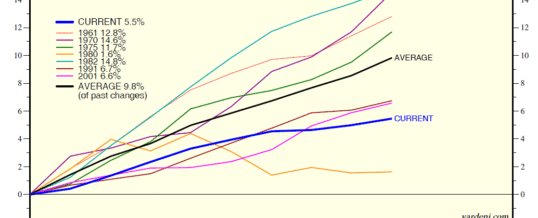
Republished from Dr. Ed Yardeni’s blog: “Dr. Ed’s Blog”
The US economy may be on the verge of a big comeback. It could experience an unusual second recovery over the next three years following the weak initial recovery of the past three years. In the past, recessions were followed by one broad-based recovery in economic activity. The Naysayers have been predicting a “double dip” recession for the US economy since it started to recover in 2009. I’m suggesting that a more likely scenario might be a double back-to-back recovery.
Our country lost lots of jobs during the recession. So far, the employment recovery has been anemic, with payrolls still 6.1 million below the record high set during January 2008. Instead of a normal V-shaped rebound, the housing industry has been in a depression, with the national single-family existing median home price down 28.9% since it peaked during July 2006 and foreclosures in the millions. The upturn in auto sales has been subpar. In addition, fiscal policy hasn’t been as stimulative as in past recoveries because there has been lots of fiscal drag from state and local governments.
Yet real GDP is up 5.5% from the recession trough during Q2-2009 through Q3-2011 to a record high of $13.3 trillion. That initial recovery was roughly half as strong as the average gain of 9.8% over the same period during the past seven recoveries. Since the official start of the latest recovery during July 2009, payroll employment is up only 1.1%, significantly lagging the average 5.1% gain of the previous seven recoveries over the same length of time–though it is on par with the last two “jobless” recoveries.
In the past, recessions were followed by one, not two recoveries. This time, key sectors of the economy haven’t participated in the initial economic rebound, but finally may be on the verge of doing so. The second recovery could take off as the pace of hiring quickens, housing activity finally picks up, auto sales head higher, and state and local governments stop retrenching. If so, then the US would finally enjoy the benefits of a broader-based recovery. (More for subscribers at “Yardeni.com”)
JAN

About the Author: